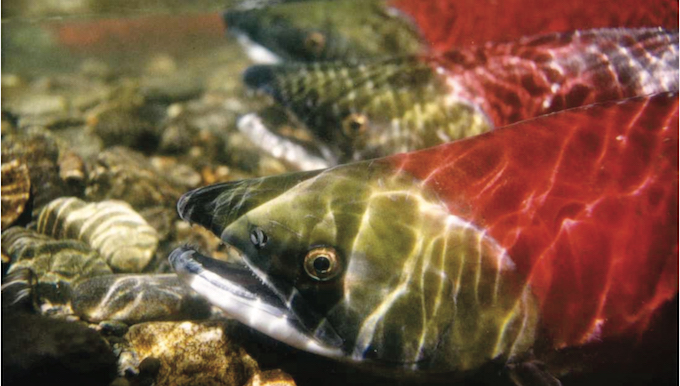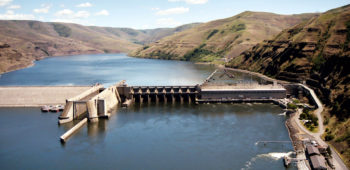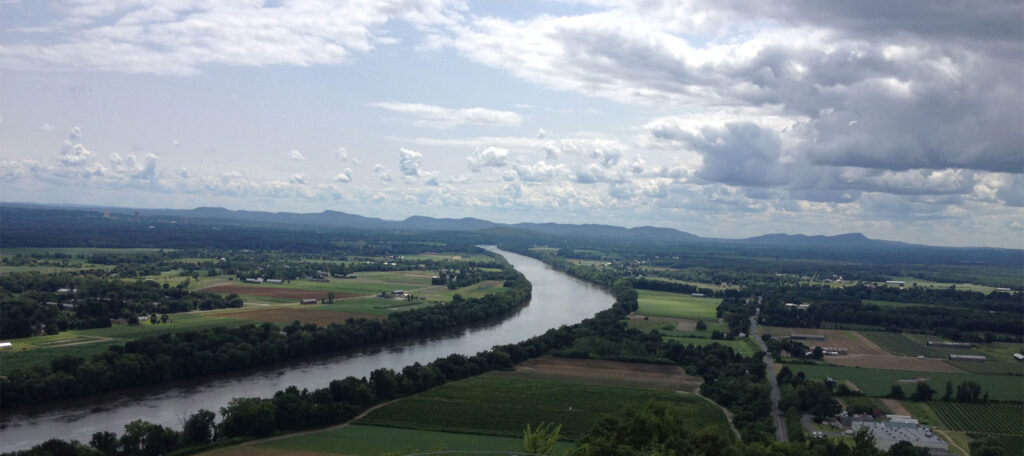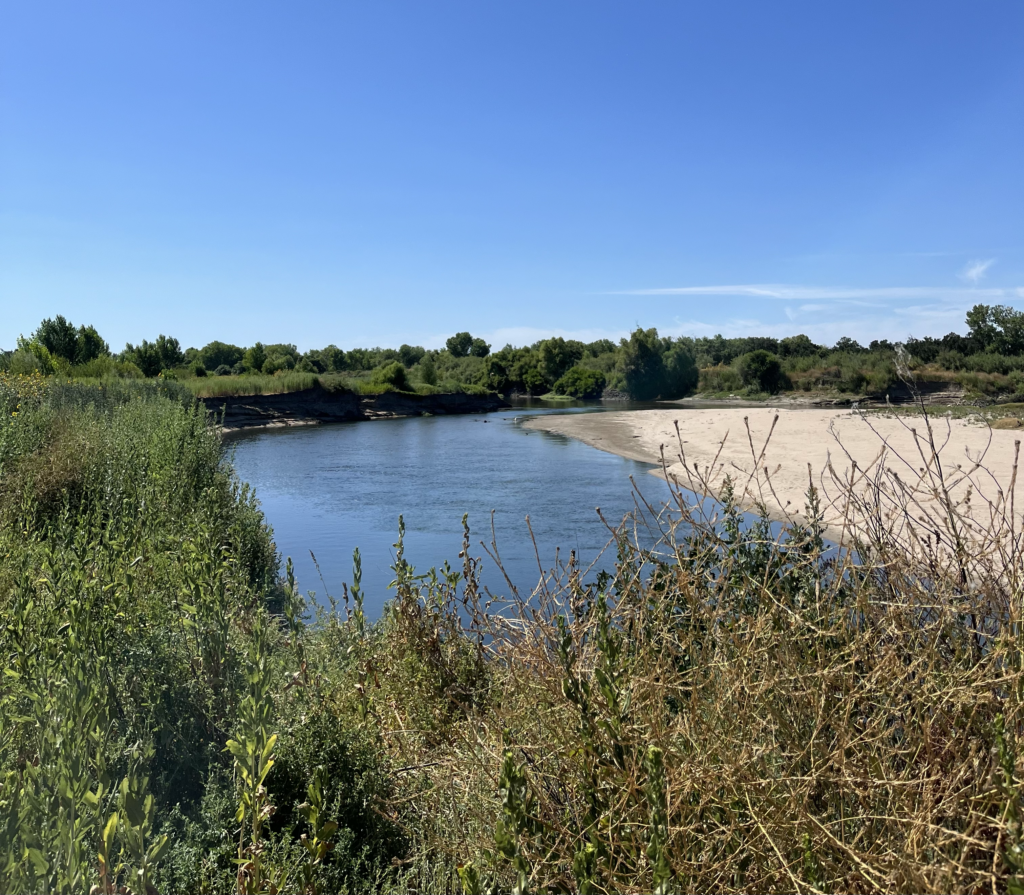Legislative Overreach Aims to Thwart Salmon Recovery
H.R. 3144, if passed, would thwart efforts to deliver critical near-term protections for endangered wild salmon, derail a court-ordered environmental review, and increase uncertainty for Northwest citizens and businesses.

Time is running out for what were once the largest salmon and steelhead runs on the planet – the magnificent runs of the Columbia River Basin in the Pacific Northwest. And now politicians are attempting to stand in the way of science and salmon recovery.
Historically, over ten million Columbia River Basin salmon and steelhead existed, but the number plummeted to fewer than 1 million in 1995, precipitating into the listing of 13 different species or populations of Columbia and Snake river salmonids as endangered or threatened under the Endangered Species Act.
Salmon and steelhead have a complex and fascinating lifecycle, one that begins in freshwater streams, segues into the ocean for a period of time, and ends in the same stream in which it was born, where the ones who survive their often long and daunting migration return to spawn and die. These salmonids are a remarkable, resilient keystone species but they are vulnerable at every stage of that life cycle.
From the 1930s to the 1970s, a system of dams was constructed by the federal government on the Columbia and Snake rivers transforming the rivers into a series of slow-moving reservoirs. The dams impede salmon and steelhead from reaching prime headwaters habitat and injure or kill the migrating fish as they travel through fish passage facilities. The reservoirs now inundate previous river habitat precious to the survival of these salmonids.
Over the past 25 years, scientific research, tribal treaty rights, and environmental advocates along with over $10 billion in federal investment have helped keep these populations from becoming extinct, but they are hanging on by a thread.
American Rivers along with our partners have been tireless advocates for managing the federal dams in the Columbia Basin in a more fish friendly manner, which includes considering the removal of the four lower Snake River dams – Lower Granite, Little Goose, Lower Monumental, and Ice Harbor dams. Part of this advocacy required employing a legal strategy, which over the past two years successfully resulted in two carefully-considered decisions by the U.S. District Court in Portland, Oregon.
The first of these legal victories occurred in May 2016, when the court found the most recent plan for managing the federal dams on the Columbia and Snake rivers violated the Endangered Species Act and the National Environmental Policy Act and would not protect wild salmon and steelhead from extinction. The court’s decision means that the managing federal agencies need to develop a new plan that carefully considers all reasonable dam management alternatives, including removal of four lower Snake River dams. It also requires the federal agencies to examine the effects of climate change on wild salmonids and the federal hydro-system. As proposed by the federal agencies, the court gave the agencies until 2021 to complete this analysis and plan. This planning process is currently underway.
This past April, a second court decision found that current dam operations based on the illegal 2014 plan – would cause “irreparable harm” to salmon and steelhead already facing extinction. The court required federal, state, and tribal fishery scientists to work together to develop a near-term dam operations plan that would release more water over the dams’ spillways to improve juvenile salmon survival. That work among the fishery experts is underway and the new annual operations are scheduled to begin in spring 2018. These new “spill” operations will comply with all state water quality standards and are widely considered the most effective near-term measure available to bring immediate benefits to salmon.
Despite federal agencies and fishery scientists being underway with these processes, politicians have decided to stand in the way of science and salmon recovery.
In June 2017, Rep. Cathy McMorris Rodgers (R-WA) and four other members of Congress introduced H.R. 3144 asserting that this legislation would “support the Federal Columbia River Power System and the benefits it brings to our region . . . ” In fact, the bill would do just the opposite: It would thwart efforts to protect endangered wild salmon and steelhead, hinder development of a more efficient and reliable power system, and risk raising power rates.
How? The bill seeks to lock-in status quo hydropower operations on the Columbia and Snake rivers that primarily benefit taxpayer subsidized barge transportation and continued capital investments in four expensive and unnecessary federal dams on the lower Snake River that should be removed to help save wild salmon and steelhead and the public’s money. Five different times over the past 16 years, the federal courts have rejected plans as illegal that would continue these business-as-usual operations.
H.R. 3144 is legislative overreach.
The actual purpose of H.R. 3144 is never stated or acknowledged in the bill: to overturn these two carefully-considered court decisions. Without ever mentioning them, H.R. 3144 would block both judicial decisions by requiring that, until 2022, dam operations must follow the illegal dam management plan rejected by the Court in 2016.
In addition, H.R. 3144 would seek to prevent any study, analysis, or consideration of dam management alternatives, such as additional increases in spill or breaching of the four lower Snake River dams. This legislative effort to circumvent the courts and the requirements of our nation’s environmental laws is contrary to the way the rule of law is intended to work in a democracy. Sadly, it would also protect a failed and costly status quo while blocking the opportunity to create a new plan that both reflects regional stakeholder input and works to achieve salmon and steelhead recovery.
American Rivers and our partners will work hard to prevent H.R. 3144 from becoming law. Please join us by contacting your U.S. Representative and requesting that he or she opposes H.R. 3144.
[su_button url=”https://act.americanrivers.org/page/5125/action/1″ background=”#ef8c2d” size=”4″ center=”yes”]Take Action »[/su_button]





7 responses to “Legislative Overreach Aims to Thwart Salmon Recovery”
Wild salmon and other river gamefish now sell for $10-20 dollars per pound and are extremely beneficial to river and coastal ocean ecosystems. On the other hand…dam reservoir irriigated crops like corn, beans and wheat etc…. sell for around $5 to $9 dollars per BUSHEL.
So we can do the math….a 50 pound WILD salmon selling for $10 dollars per pound is worth around $500 dollars…a bushel of irrigated corn/beans…..around $5 dollars.
Wild river gamefish are becoming increasingly rare around the world as more countries race to build mega-dams and destroy their river fisheries for dam generated electricity….electricity which can be easily generated by other means such as natural gas, wind or solar. So this will make wild river fish like salmon an excellent export commodity in the near future as wild river fish become extinct around the world. (there are probably hundreds….if not thousands….of wild river gamefish worldwide which are eaten by humans….all now being heavily impacted by mega-dam building).
Multiply millions of 50 pound salmon restored to east and west coast rivers (because of dam removal )….and the profit motive to remove dams is far greater than the profit motive to grow dam reservoir irrigated crops and sell dam generated electricity.
10 million 50 pound wild river salmon…..at a worth of $500 dollars each = $500 million dollars. (some salmon can reach 100 pounds). Remember salmon are not the only edible / large gamefish in the USA which needs to swim from the ocean to upstream waters to reproduce.
In saving salmon and removing dams we also restore our river deltas downstream…..because dam removal allows rich river bottom soil sediments to flow downstream and rebuild now sinking river-deltas bottoms….which are heavily depleted by upstream dams…which stop soil sediment flows to downstream.
So this restoration of downstream river-deltas bottoms and riverside floodplains…through upstream dam removal…..also increases gamefish numbers….because river deltas and riverside floodplains are the nurseries for much of the world’s river and ocean gamefish.
So the economics of dam building is not logic based, it’s based on the special interests lobbying of hydropower energy sellers, irrigated crop farmers, dam building companies and.those who simply dam rivers to create “lakeside” housing developments around ecologically destructive dam reservoirs.
In tropical coastal waters removing dams from rivers can save coastal corals form overheating and dying…..since cold river water out flows into coastal waters….greatly cools coastal waters.
Make our rivers wild again.
Save the salmon. Shelve this bill. Support the science related to these fish.
cathy Mcmorris total disregard for the natural environment is disgusting
Even if the congressional members supporting this bill think the results won’t affect their food supply, or their kids’, or their grandkids’, it will. Even if they don’t care about how WA state is losing such a high percentage of its natural habitat, residents who don’t stand to gain huge profits from overreaching industrialization do care and have a voice. Our congressional members are supposed to listen to that voice.
Hi Michael, while the click to tweet is within the body of the blog, there is a click to share button for both Facebook and Twitter that hovers on the left-hand side of the page. Hope that helps!
You shouldn’t limit action links to twitter!